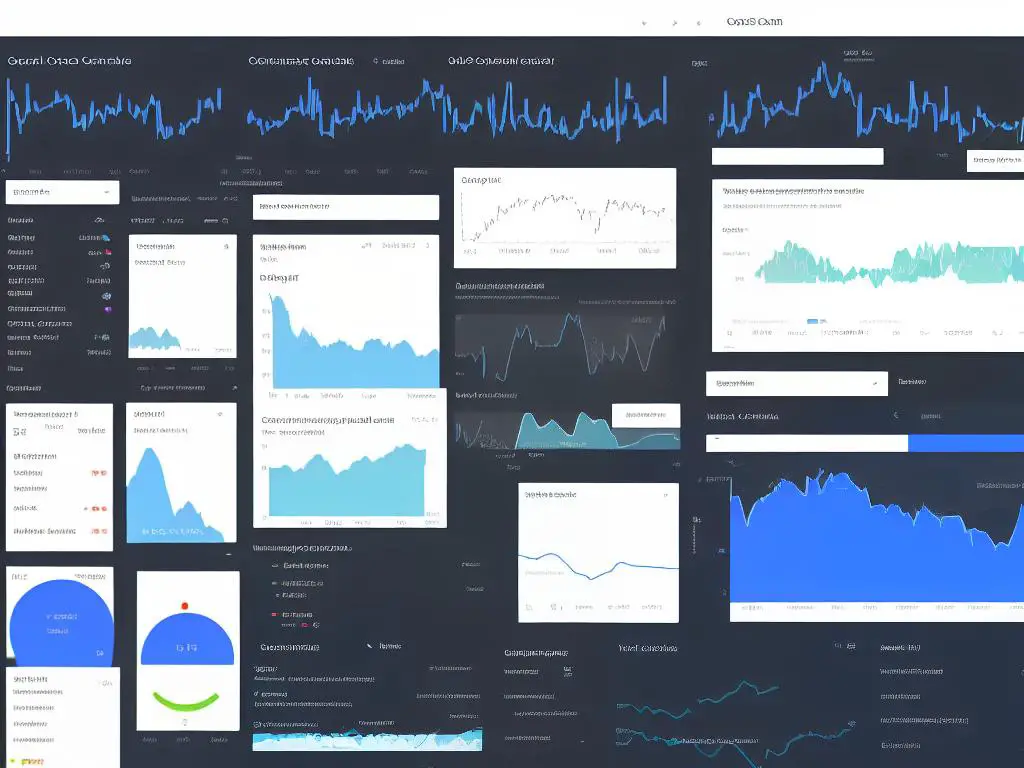As more users access the internet through their mobile devices, it’s crucial for website owners and marketers to understand and optimize their websites for mobile performance. This article provides essential information on Google Search Console, a powerful tool in tracking website performance and SEO, focusing on mobile performance metrics, optimization techniques, and report analysis.
Overview of Google Search Console
Google Search Console
Google Search Console is a free resource provided by Google that helps website owners, webmasters, and digital marketers to monitor, maintain, and troubleshoot their website’s search performance in Google’s search results. With its comprehensive suite of tools, Google Search Console offers insights into how Google’s search engine crawls, indexes, and serves a website, making it an invaluable resource for improving search engine optimization (SEO) and overall web presence. One vital aspect of this tool is its ability to give insights into mobile performance, which is essential in today’s mobile-first web environment.
Mobile Performance Analysis
One of the most significant aspects of Search Console’s mobile performance analysis is the Mobile Usability report. This report allows users to identify possible issues that could impact user experience on mobile devices, such as font size, touch element spacing, and viewport configurations. By addressing these issues, website owners can improve their mobile search rankings and offer a better experience for their visitors. Additionally, Google Search Console provides the ability to review search traffic data to better understand how mobile users interact with your website, helping to further optimize your site for mobile use.
Core Web Vitals Report
In Google Search Console, the Core Web Vitals report provides insights into the real-world performance of your website on both mobile and desktop devices. This report focuses on three essential aspects: loading speed, interactivity, and visual stability. By using this report, webmasters can quickly identify opportunities to enhance the mobile experience, ultimately leading to a boost in mobile search rankings. As the importance of mobile usage continues to grow, utilizing Google Search Console’s wide array of tools and reports becomes increasingly essential to remain competitive in today’s digital landscape.

Mobile Performance Metrics in Search Console
Mobile Performance Metrics in Google Search Console
Beyond the Core Web Vitals report, other mobile performance metrics in Google Search Console offer valuable information on how effectively your website is performing on mobile devices.
One such critical metric is the click-through rate (CTR), which measures the percentage of users who clicked on your website after seeing it in the search results. A high CTR signifies that users find your website relevant and engaging, while a lower CTR may indicate that your website’s title and description aren’t enticing enough or that your content is not well-optimized for mobile search.
Impressions
Impressions are another important mobile performance metric provided by Google Search Console that measures how many times your website appeared in search results.
This metric can help you understand the visibility of your website on mobile devices and identify any potential issues that might be affecting your website’s appearance in search results.
A high number of impressions implies that your website is visible to a large audience, but if your click-through rate is low, it may indicate that your website is not effectively capturing users’ attention.
The Average Position Metric
The average position metric reflects the average ranking of your website in mobile search results for the selected period.
This metric is useful for tracking the progress of your search engine optimization (SEO) efforts and identifying areas for improvement.
A higher average position means that your website is ranking better in search results and is likely to be seen by more users. However, it’s essential to note that the average position can be affected by factors such as changes in search algorithms, new competitors entering the market, and fluctuations in search demand.
Conclusion
In today’s digital landscape, understanding mobile performance is essential for businesses to succeed in Google Search. By analyzing key metrics such as click-through rate, impressions, and average position, businesses can gain valuable insights into their website’s performance in the mobile search space. These insights enable informed decisions to optimize the SEO strategy, particularly focusing on mobile devices where the majority of users search the web.

Optimizing for Mobile-First Indexing
Mobile-First Indexing: A Crucial Factor in Mobile Performance
One significant aspect that contributes to a website’s mobile performance on Google Search is mobile-first indexing. This approach by Google prioritizes the ranking and indexing of mobile versions of websites over their desktop counterparts, acknowledging the prevalent use of mobile devices for accessing the web.
Therefore, it is crucial for businesses to make their websites mobile-friendly and responsive. Utilizing Google Search Console to monitor and assess mobile performance provides valuable insights to further optimize a website’s mobile responsiveness, ensuring continued success and visibility in Google’s search results.
Best Practices of Responsive Design
To ensure a website is mobile-friendly, developers should follow best practices of responsive design, enabling seamless user experience across a variety of devices and screen sizes.
Techniques such as using flexible grids, fluid images, and media queries can ensure optimal rendering and functionality. In Google Search Console, the mobile usability report can be used to identify any possible issues on the mobile version of a website. This includes problems related to viewport configuration, text size, or tap target size.
Optimizing Website Content
One essential aspect of optimizing for mobile-first indexing is maintaining consistency in your website’s content across both mobile and desktop versions. This allows Google to accurately crawl and index the information on your site. Proper use of metadata, structured data, and header tags can significantly improve a website’s mobile performance. Prioritizing faster loading times by compressing images, minimizing redirects, and implementing lazy loading can also contribute to better user experience and search visibility.

Technical Factors Affecting Mobile Performance
Another crucial technical factor to consider in mobile performance is page speed, particularly in conjunction with Google Search Console. Slow-loading websites can negatively impact user experience, potentially leading to lower search rankings. To improve page speed and overall performance, optimize images, minimize server response time, and utilize browser caching. Google also provides helpful tools such as PageSpeed Insights to identify potential issues and offer suggestions for enhancing loading times. By addressing these key areas and using the insights provided by Google Search Console, businesses can effectively optimize their websites for mobile-first indexing and improve user engagement.
Responsive Web Design (RWD) is another essential aspect of optimizing mobile performance. RWD refers to designing websites that can adapt and display optimally across different devices and screen sizes. Given the variety of devices users employ to access the internet, implementing RWD ensures a seamless user experience and improves site performance. Efficiently utilizing CSS media queries and flexible grids can help websites achieve a responsive layout, resulting in better visibility and user engagement across various platforms.
Accelerated Mobile Pages (AMP) is an open-source initiative supported by Google, aimed at improving the loading speed of web pages on mobile devices. By stripping down HTML, CSS, and JavaScript elements, AMP provides a lightweight version of a web page, significantly reducing load times. This greatly affects mobile performance, as Google prioritizes AMP-enabled pages in search results, leading to increased traffic and a better user experience. Implementing AMP can boost your website’s visibility and overall mobile performance, making it a crucial factor to consider when optimizing for Google Search Console.

Content Optimization for Mobile
Another essential aspect to consider when aiming to increase mobile performance in Google Search Console is content optimization for mobile devices. Optimized content plays a vital role in enhancing the overall user experience on smartphones and tablets.
One key factor for mobile content optimization is ensuring readability. This involves utilizing easy-to-read fonts, appropriate font sizes, and clear headings. These adjustments make it simpler for users to skim through your content on their mobile device. Moreover, presenting content in a logical structure, and using bullet points or numbered lists, will further improve readability on mobile devices, ultimately boosting mobile performance in Google Search Console.
Navigation is another vital factor in content optimization for mobile devices. A user-friendly and straightforward navigation menu with easily accessible and well-organized links can help users find information quickly. Developing a responsive web design, which adapts to different screen sizes and ensures your content is accessible on a variety of devices, is essential.
Furthermore, image optimization plays an integral part in mobile performance. By compressing images and using the right file format, you can speed up your website’s load time and improve user experience, which ultimately affects your Google Search Console performance.
With the increasing popularity of mobile-specific features such as voice search, it is crucial to optimize your website’s content for these platforms. Doing so will drive more traffic to your site and improve its performance in Google Search Console. By optimizing for voice search, for example, you can use more conversational keywords, provide concise and relevant answers to common questions, and apply schema markup to help search engines better understand your page’s content.

Tracking and Analyzing Mobile Performance Reports
As the mobile landscape continues to evolve, it is essential to stay ahead of the game by monitoring your site’s performance in Google Search Console (GSC), which plays a vital role for website owners and SEO professionals. A significant increase in users accessing websites from their mobile devices means optimizing for mobile is now more important than ever.
Google Search Console Mobile Performance Reports
GSC offers mobile performance reports that can help users optimize their sites for mobile devices, ensuring a satisfactory user experience and improved SEO rankings. By keeping track of your website’s mobile performance and implementing necessary changes, you can ensure your website stays visible and relevant in the ever-evolving mobile landscape.
Accessing Mobile Performance Reports in Google Search Console
To access the mobile performance reports, users must first sign in to their Google Search Console account and select the desired property (website). They can then click on “Performance” from the left side menu and filter the results by choosing “Device: Mobile” in the upper-left corner. This will provide an overview of the website’s mobile performance, including metrics such as clicks, impressions, average click-through rate, and average position. Users can dive deeper by analyzing individual queries and pages, helping them identify and target specific areas for improvement.
Interpreting Mobile Performance Data and Devising an SEO Strategy
Interpreting mobile performance data can be a critical factor when devising an SEO strategy. The goal is to identify trends and patterns among the different metrics as well as common issues like slow load times and improper viewport setups that negatively impact the website’s mobile performance. By doing so, users can prioritize and focus on high-impact changes which, once implemented, can lead to noticeable improvements in mobile user experience and search engine rankings. Regular tracking and analyzing of mobile performance reports in Google Search Console allow website owners to make data-driven decisions and stay ahead in the competitive digital landscape.

Ultimately, optimizing your website for mobile performance is vital in today’s digital landscape. By understanding the features and metrics provided by Google Search Console, implementing mobile-first indexing best practices, optimizing technical factors, and creating mobile-friendly content, you can improve your website’s SEO and enhance the user experience. Remember to consistently track and analyze mobile performance reports to make data-driven decisions and keep your website ready for the mobile-driven world.

